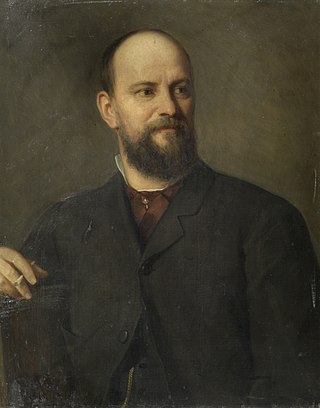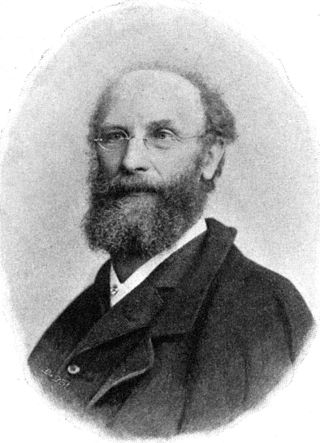
Nikolaus Wilhelm Freiherr Lenk von Wolfsberg (born March 17, 1809, Budweis, Austria; died October 18, 1894, Troppau, Austria) was an Austrian officer (Feldzeugmeister), owner of the Corps Artillery Regiment No. 4 and scientist.

Nikolaus Wilhelm Freiherr Lenk von Wolfsberg (born March 17, 1809, Budweis, Austria; died October 18, 1894, Troppau, Austria) was an Austrian officer (Feldzeugmeister), owner of the Corps Artillery Regiment No. 4 and scientist.

The young Wilhelm was adjusted in the Artillery regiment Nr. 4 in 1823. He completed the higher course of his artillery training in the Austrian military training centres and the Bombardier Corps in 1826, moved there in 1831 to lieutenant. In the following years, Lenk served as commander of a Bombardier detachment in the federal fortress of Mainz. In 1839, he became first lieutenant in the Field Artillery Regiment Nr. 1, then in 1848 Lieutenant Commander at Prague, as a captain in 1849 at Peterwardein and 1851 at Vienna in the artillery stuff-administrative district of the 2nd Artillery regiment. He was assigned to the General Division Artillery and promoted to major at the end of 1852. Now he could completely dedicate his time to his work in the field of technical chemistry. [1]

On 1 April 1854, he was appointed lieutenant colonel and chairman of the second Department of General Artillery Directorate (Director of guncotton centre). [2] He remained in this position until he promoted, out of the ranking tour, on 19 February 1861 to brigadier general and was entrusted with the management of the Artillery Committees, then in 1862 followed the appointment as national director of artillery in Vienna. [3] [4]
In this function he became the second owner of the Artillery Regiment No. 1 "Kaiser Franz Joseph" in 1866 [5] and earned through the armouring of the bridgehead Floridsdorf, the fortified camp near Vienna, as chief of artillery great merits during the war of 1866. Therefore, the emperor promoted him on November 9, 1867 (rank from November 13 of the year), to major general (Feldmarschalleutnant), and in 1871 he appointed Wolfsberg to the owner of the Corps Artillery Regiment No. 4. [6] [7] In April 1875, he entrusted him with the command of the fortress of Olmütz, which he headed until his retirement.
On April 1, 1877, he got the rank of Feldzeugmeister and retired at his own request. [6] [8] [9]
The Baron occupied himself in 1849 with technical work, especially intensive with the improvement and consolidation of the gun cotton trinitrocellulose. He tried to use the guncotton as blowing agent for guns. Therefore, the “K. K. Ärarische Schießwollanstalt” in Hirtenberg, a predecessor of today existing arms factory Hirtenberger AG, was established in 1851. The later Feldzeugmeister succeeded in generating a Trinitrocellulose [C12H7(3NO4)O10], that met the military requirements for durability, uniform combustion with high combustion rate and temperature insensitivity up to an ignition point of 136 °C. [10]
Wolfsberg patented the process about his method of controlled compression of the fibre at the guncotton on June 4, 1864. [11] Therefore, he was asked to give lectures in England and France. In France, he was allowed to report Emperor Napoleon III. personally and received from his hand the Commander's Cross of the Legion of Honour and a box provided with his initials and ornate with diamonds. However, by the end of 1865 the production was abandoned prematurely in fear of spontaneous combustion in Austria, due to explosions in two magazines. [8] [12]
Anastasius Grün wrote: "It was a fatal rashness that the method to use guncotton as blowing agent in guns, developed by Major General Lenk of Wolfsberg, was not pursued further after the explosion of a depot. Finally, it was just the Austrian artillery, whose officers and graduates of the Engineering Academy were the main victims of the defeat at the Battle of Königgrätz: the battery of the dead." [13]
Furthermore, Wilhelm invented a good corroborating percussion fuse, a shrapnel grenade, and collapsible tubes for mountain guns. He also gave a construction of the so-called wedge traits for rifled guns. The results convinced and had to go in equipping 30 field batteries. [9] [12]
His performance is still not forgotten.

Wilhelm was the son of Jacob Freiherr Lenk von Wolfsberg, Colonel and Knight of the Military Order of Maria Theresa. He married on June 24, 1833, in Mainz Eveline Aloisia Schreher (b. November 2, 1810, Mainz; d. January 7, 1871, Troppau). They had five children. Rudolf (1834-1907), the eldest son, was an Austrian General, too. One of his daughters, Malwine (1839-1866), married the Austrian General Constantin Buol von Wischenau (1822-1893), the youngest, Friederike Berta (1843-1906), was the spouse of the deputy of the Austrian Imperial Council and large landowner's Karl Freiherr Putz von Rolsberg (1852-1921). She was the ancestress of the children of Count Alexander, son of Baron Alexander Wassilko von Serecki. [28] [29]

Archduke Wilhelm Franz Karl of Austria-Teschen was an Archduke of Austria from the House of Habsburg.

Joseph Nigg was an Austrian painter, with painting on porcelain a specialty.
Alexander Kaiser was an Austrian painter and lithographer. He was the son of the bookbinder and lithographer Joseph Franz Kaiser and brother to the lithographer and painter Eduard Kaiser.

Franz Rumpler was an Austrian genre and landscape painter.

Balogh von Mankobük, mankóbükiBalogh in Hungarian, was a Austro-Hungarian family from the Habsburg monarchy, originally from the region of Sopron / Ödenburg.

Johann Joseph von Semlin was the reputed son of Nader Shah. After his father's murder, a loyalist brought Ali Mirza Khan to Maria Theresa in Vienna, then Austrian Empire, who named him "Johann Joseph Freiherr von Semlin". In 1746, when Von Semlin was 10 years old, he was sent to Graz to learn the German language and European culture. In 1756, he converted to Christianity and two years later returned to Vienna.

Siegmund L’Allemand was an Austrian painter, known for history and war scenes, genre works and portraits.
Alfred von Kremer was an Austrian orientalist and politician.
Johann Baptist Henneberg was an Austrian composer, pianist, organist and Kapellmeister.

Carl Friedrich Clemens Weinmüller was an operatic bass and theatre director. A bass with the Imperial Ccourt Opera in Vienna, he is known for performing Rocco in the premiere of Beethoven's Fidelio.
Johann Claudius Herr, alternatively spelled Klaudius Herr or Claudius Heer, was an Austrian painter and miniaturist. He was well known as an exceptional artist of the Vienna Porcelain Manufactory.

Blasius Höfel was an Austrian copper engraver.

Wilhelm Freiherr von Ramming von Riedkirchen was an Austrian Feldzeugmeister who commanded an army corps during the Austro-Prussian War.

Johannes Benk was an Austrian monumental sculptor.

Franz Kuhn von Kuhnenfeld was an Austro-Hungarian military officer who fought against Giuseppe Garibaldi in the wars of Italian independence and served as Imperial and Royal Minister of War from 1868 to 1874. During his term, a unified system of conscription for both Cisleithania and Transleithania was introduced, corporal punishment in military service was abolished, and the Franz-Josephinian Land Survey was initiated. He was a supporter of the Austro-Hungarian polar expedition and an opponent of the Austria-Hungary's 1879 alliance with the German Empire.

Peter Freiherr Duka von Kádár was of Croatian Serb ancestry privy councillor, officer (Feldzeugmeister) and Inhaber of the Hungarian Infantry Regiment No. 39, then State and Conference Council of the Emperor. He was a recipient of the Knight's Cross of the Military Order of Maria Theresa. He is remembered as a great adversary of Napoleon and to have negotiated an armistice with the French Emperor at Lusigny-sur-Barse.

Karl August Krebs, also Carl, Miedtke, was a German pianist, composer, conductor and Kapellmeister.
Johann Joseph Philipp Graf Harrach was an Imperial Field Marshal and from 1739 to 1762, President of the Hofkriegsrat.

Anton Mollinary Freiherr von Monte Pastello was an Austro-Hungarian General of the Artillery and writer. He was known for being the Deputy of the 4th Corps during the Battle of Königgrätz and had an extensive campaign within mid 19th-century conflicts involving Austria.
Laurenz Herr, alternatively spelled Lorenz Herr or Laurenz Heer, was an Austrian enamel painter. He was an artist of the Vienna Porcelain Manufactory.